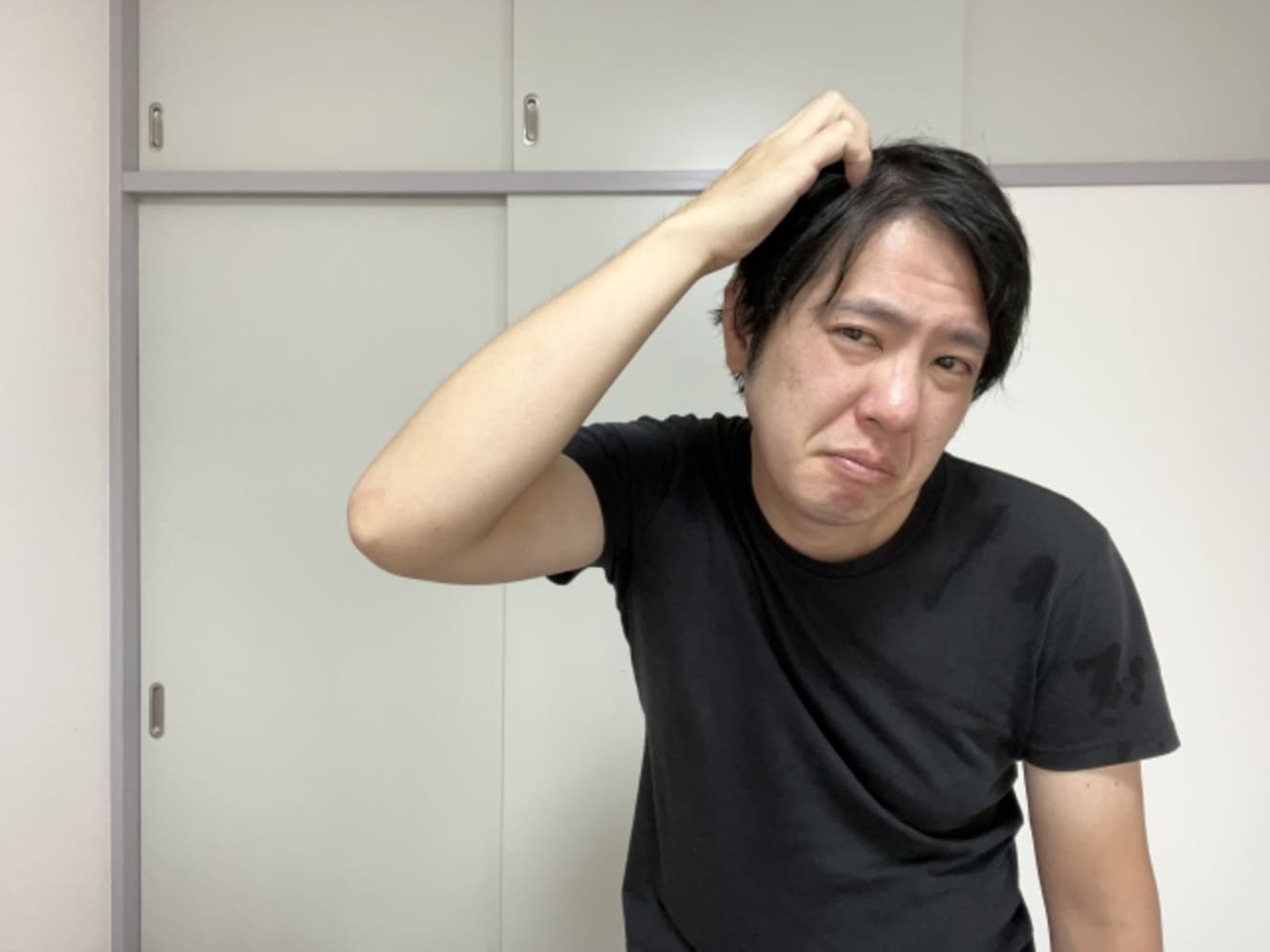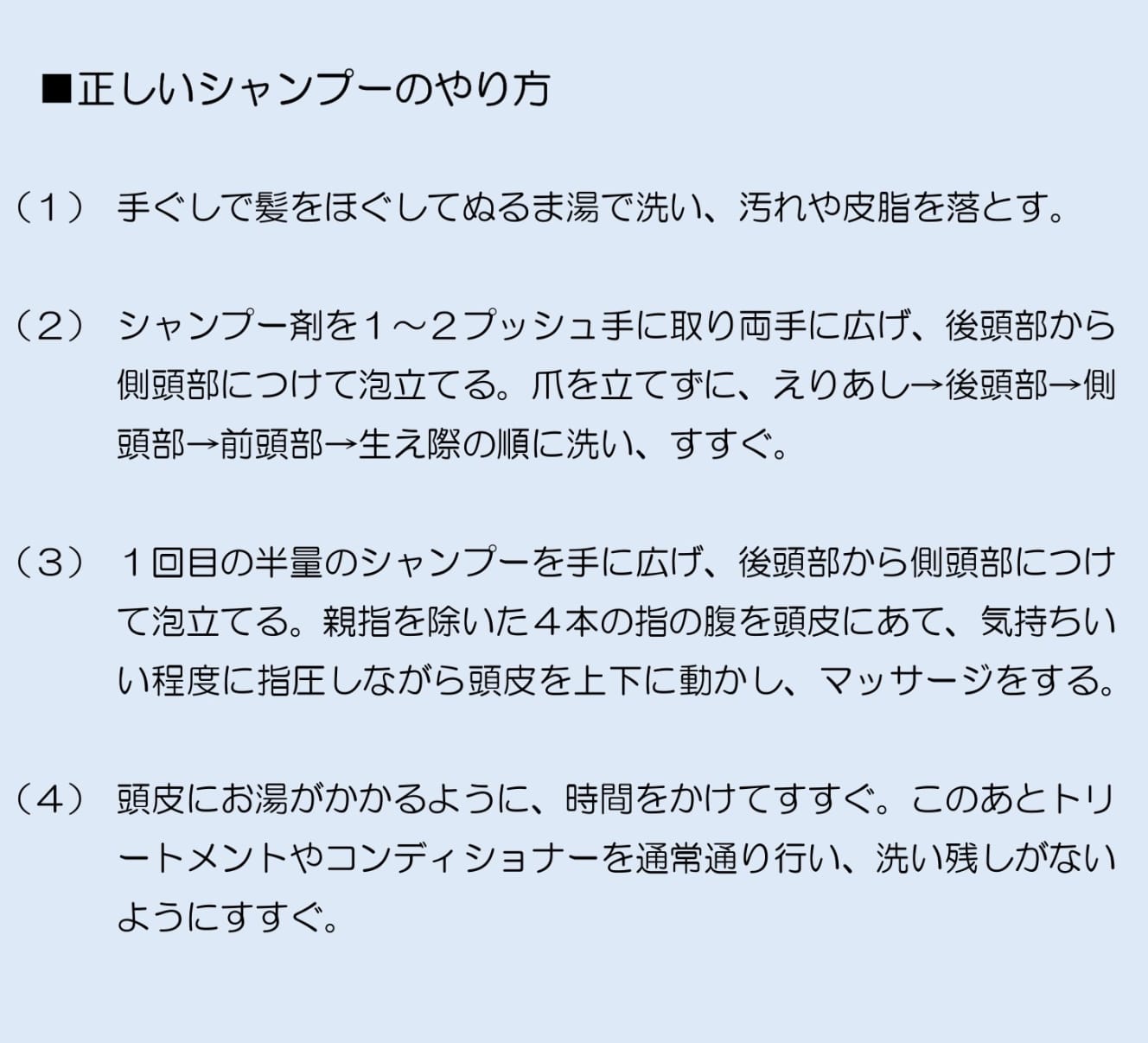White flakes on your shoulders when you wear a suit… “Dandruff” is a common cause of dandruff.
Scalp athlete’s foot, atopic dermatitis… can lead to hair loss and thinning hair.
Dandruff in large enough quantities to be visible is related to incorrect hair care, such as shampooing and drying. Some dandruff is related to disease, which can lead to hair loss and thinning.
Dr. Hiroshi Takenaka of D Clinic Tokyo says.
Be careful if dandruff falls just by brushing your hair, or if dandruff flakes on your shoulders when you wear a dark-colored suit. If this is not a coincidence and continues every day, you need to determine the cause as soon as possible and reevaluate your hair care.
Dandruff is the waste product of dead cells on the scalp. Dandruff is the waste of dead cells on the scalp. Our skin repeats metabolism in a certain cycle, and old cells naturally peel off. Therefore, even when the scalp is healthy, there is dandruff, but it is too fine to be seen and is washed away by daily shampooing.
However, for those who have a large amount of dandruff, the scalp is troubled, and the amount of dandruff that flakes off increases, and the dandruff itself becomes more noticeable, until it is visible.

Dandruff, which has a filthy image, gives people a negative impression. To begin with, there are two types of dandruff, dry dandruff and oily dandruff, and knowing the characteristics of each is the first step toward improvement.
Dry dandruff” is a type of dandruff that produces “dry, flaky” dandruff. Dry dandruff occurs when the scalp dries out due to over-washing or improper shampooing. It is characterized by its whitish color.
The second type of dandruff, “oily dandruff,” is greasy and “sticky” and yellowish in color. Our bodies contain a commensal bacterium called Malassezia. Since this bacterium feeds on sebum, it is most common on the scalp, underarms, forehead, nose, and foreskin, where there is a lot of sebum.
When sebum increases on the scalp, the Malassezia bacteria multiply and behave badly, resulting in rough skin and the appearance of greasy dandruff.
There are two types of dandruff: dandruff that can be improved simply by reviewing hair care, and dandruff that is caused by other diseases. The latter is a skin disease that requires treatment.
Diseases related to dandruff include atopic dermatitis, seborrheic dermatitis caused by Malassezia, psoriasis vulgaris, which causes a red rash and silvery white dandruff, and athlete’s foot of the scalp. Dry dandruff” appears as a symptom of atopic dermatitis, psoriasis vulgaris, and athlete’s foot, and “oily dandruff” appears as a symptom of seborrheic dermatitis.
Athlete’s foot on the scalp is called shirakamo and is treated with a drinkable medication that kills the causative fungus, Trichophyton rubrum. Other skin diseases are also treated with ointments and oral medications. Many people are concerned about whether dandruff is caused by a disease.
The key point to check is symptoms other than dandruff. If there is itching or redness in addition to dandruff, it may be due to a skin disease. Also, if the inflammation is strong, a few strands of hair may fall out with just a light tug. If such symptoms are present, a visit to a dermatologist is recommended. If it is just dandruff, there is little chance of disease.”
I shampoo hard every day, why?
A major cause of dandruff is daily hair care. Many men are taking care of their hair in their own way without knowing what they are not supposed to do.
One man who suffers from dandruff says, “I shampoo my hair hard every day, but why? In fact, there are people who say, “I try my best to shampoo my hair every day, but why? In fact, neither too much nor too little washing is good. Washing too much is not about the number of times you wash your hair, but about how hard you wash it in order to remove dandruff. Washing with fingernails can dry out the scalp and lead to “dry dandruff.
On the other hand, not washing too much can lead to “oily dandruff. Men’s scalp tends to produce sebum easily, and if it is not clean, it becomes a comfortable environment for Malassezia bacteria. In addition, the shampoo and treatment products used are not suitable for the skin, and not rinsing the scalp properly can also aggravate the scalp environment.

Another “bad habit” is the habit of drying one’s hair naturally after shampooing or going to bed without drying it. People who spend time without using a hair dryer after taking a bath, thinking, “It’s short,” or “It will dry out soon,” should stop doing so immediately.
When the scalp and hair are damp, it is easy for bacteria to multiply, which leads to odor and scalp irritation. This creates an environment that is prone to odor and scalp problems, and naturally, dandruff is also more likely to occur.
In addition, habits that are generally considered “unhealthy,” such as disordered eating, lack of sleep, stress, and fatigue, also apply. Obesity increases the metabolic rate, which in turn increases the production of sebum on the scalp.
Don’t “self-styling” it… The right way to shampoo and dry your hair to prevent dandruff.
To improve dandruff, it is essential to maintain a healthy scalp. To achieve this, it is effective to shampoo and dry the scalp correctly. Dr. Takenaka recommends “twice daily” shampooing, including scalp massage. The trick is to wash gently and rinse thoroughly.

After shampooing, dry your hair with a hair dryer as soon as possible. To protect the scalp, do not leave your hair wet for long periods of time.
After shampooing, thoroughly wipe the moisture from the roots of your hair with a towel. Use warm air from the hair dryer to dry the entire hair, and then use cold air to tighten the hair at the end for best results.

If you suffer from dandruff easily, it is also important to review your diet. If your body is unhealthy, it will be difficult to have a healthy scalp environment no matter how hard you try to take care of your hair.
For sticky, oily dandruff, we recommend taking B vitamins, especially vitamins B2 and B6. Among them, vitamins B2 and B6 inhibit sebum secretion. Vitamin B2 is found in pork and beef liver, grilled laver, and dried shiitake mushrooms, while vitamin B6 is found in garlic, tuna, and bonito. Be careful not to binge drink or eat too much, and watch out for vegetable deficiencies.”
People in their 30s to 50s, who are in the prime of their working lives, secrete a lot of male hormones and are prone to sebum production. Therefore, Dr. Takenaka recommends checking the condition of the scalp and hair in the same way that one checks the face every day.
If you are not ill but are concerned about dandruff, first try shampooing and drying your hair carefully. If it doesn’t improve after a while, or if symptoms such as itching or redness appear, consult a dermatologist as soon as possible. There is no need to give up and say, ‘It’s just my constitution,’ there are treatments available.
Dandruff is also related to hair growth problems such as thinning hair and hair loss. Now may be the time to reevaluate your “self-made” hair care routine in order to maintain a clean impression and a youthful appearance.
Hiroshi Takenaka is a physician at D Clinic Tokyo. He is a board-certified specialist of the Japanese Dermatological Association and a member of the Japanese Society of Allergology. He provides medical care based on the latest knowledge of hair growth and skin diseases. He is well versed in all skin diseases such as atopic dermatitis, as well as male hair problems such as AGA and alopecia areata.
Interview and text by: Yoko Kemmochi
Born in Yamagata Prefecture in 1983, Yoko Tunemochi worked for 10 years in the editorial department of a health information magazine, editing monthly magazines and web media before becoming a freelance writer. Currently, she interviews, plans, and writes about doctors and specialists, focusing on healthcare and medical fields.